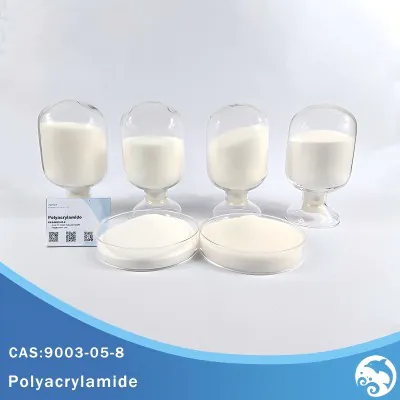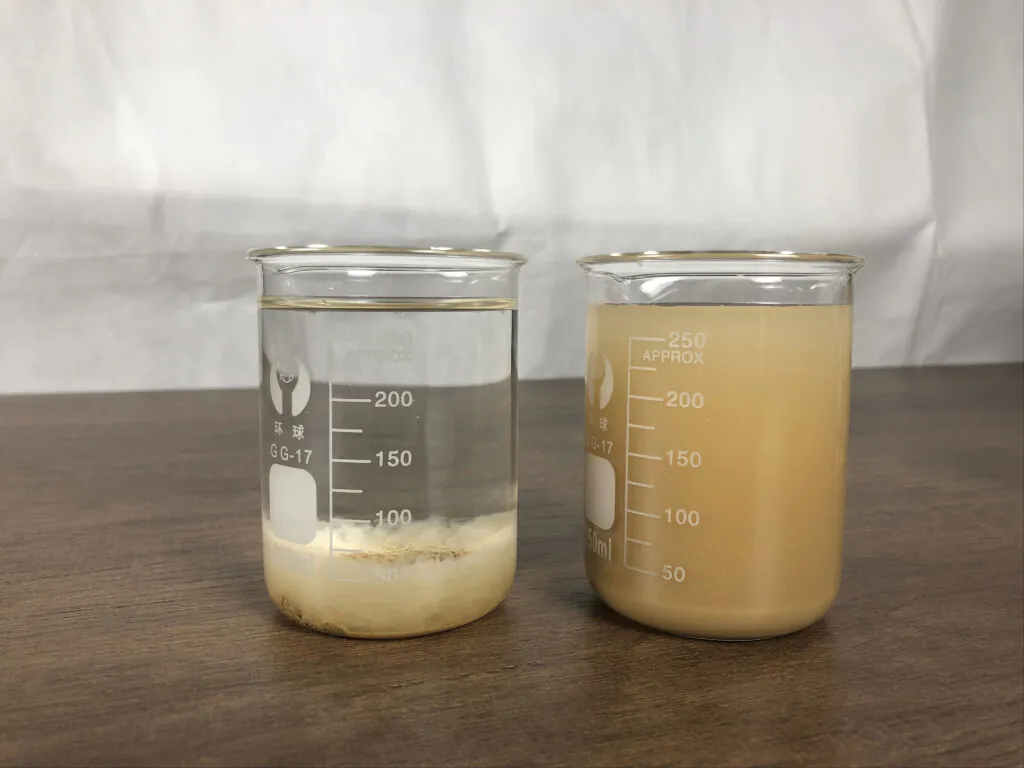With the increasing shortage of sand resources and strict environmental policies, sand washing operators are facing three major challenges: high wastewater treatment costs (accounting for 35%-45% of operating costs), serious fine sand loss (industry average loss rate of 12%-18%), and insufficient environmental compliance rates (industry average of 67%). As a company with 20 years of experience in developing and producing polyacrylamide (PAM), we have verified through over 200 sand washing plant transformation projects that using PAM effectively solves these industry challenges. This article will comprehensively explain how PAM can improve wastewater treatment, enhance economic benefits, and solve industry pain points through technical principles, selection strategies, and economic benefits.
The Three Key Issues in the Sand Washing Industry and PAM Solutions
1.1 Optimizing Wastewater Treatment Costs
- Traditional wastewater treatment cost: 0.8-1.2 RMB per ton
- With PAM, the cost: 0.35-0.6 RMB per ton (a 40%-50% reduction)
- Case study: A sand washing plant in Zhaoqing, Guangdong reduced the use of flocculants by 62% using anionic PAM (molecular weight 18 million)
Solution: By using PAM, the amount of flocculant needed is significantly reduced, lowering the overall wastewater treatment cost and improving efficiency. This also minimizes the waste of chemical agents.
1.2 Increasing Fine Sand Recovery Rate
- Traditional sedimentation tank recovery rate: 78%-82%
- With PAM, the recovery rate: 92%-95% (an increase of 14-17 percentage points)
- Key technology: Cationic PAM effectively captures particles smaller than 0.1mm in a pH range of 6.5-7.5
Solution: After using PAM, the fine sand recovery rate increases significantly. This helps sand washing companies reduce fine sand loss and improve sand resource utilization.
1.3 Meeting Environmental Compliance Requirements
- Wastewater indicators after using PAM:
- Suspended solids concentration: ≤50mg/L (national standard requirement: ≤70mg/L)
- COD removal rate: 85%-92%
- Sludge moisture content: 75%-80% (meets transportation and disposal requirements)
Solution: With PAM’s flocculating effect, the treated wastewater meets environmental standards. This helps companies pass environmental inspections and avoid fines and production stoppages due to non-compliance.
What is Polyacrylamide (PAM)?
Polyacrylamide is a polymer made from the polymerization of acrylamide monomers. It is widely used in the water treatment industry. PAM comes in four types according to its ionic characteristics: cationic PAM (CPAM), anionic PAM (APAM), nonionic PAM (NPAM), and amphoteric PAM (ZPAM).
| CAS No.: 9003-05-8 EINECS No.: 231-545-4 Formula: (C3H5NO)n Synonyms: Poly(2-propenamide), PAM, pAAM Appearance: White crystal HS Code: 390690 Category: Flocculant, Organic polymer |  |
The special molecular structure of PAM makes it highly effective for flocculation in wastewater treatment, making it an essential chemical for the sand washing industry.
PAM’s Function and Selection Guide
3.1 Function and Benefits
- Rapid flocculation and sedimentation: PAM can effectively agglomerate small particles in water, causing rapid settling and significantly improving sedimentation speed. This shortens the settling tank treatment time.
- Increased water reuse: The treated water can be reused, reducing the company’s water costs.
- Reduced sludge moisture content: PAM helps separate water from sludge quickly, reducing the volume of sludge storage and making it easier to transport.
- Reduced chemical usage: Compared to traditional inorganic flocculants, PAM requires lower doses and delivers better results, significantly reducing chemical costs.
Case study: A laboratory comparison experiment showed that adding 0.3 ppm anionic PAM reduced the turbidity of wastewater from 3000 NTU to 50 NTU, improving sedimentation speed by 80 times.
3.2 Correct Usage
- Dissolution preparation:
- Slowly add PAM solid particles to stirring water, with a recommended concentration of 0.1%-0.3%. Stir for 30-60 minutes to ensure the chemical is fully dissolved.
- Dosage:
- The solution can be evenly added to the wastewater treatment system using a metering pump or manually. The dosage is usually between 5-20g/m³, and the exact amount depends on the water quality.
- Sedimentation and reuse:
- After treatment, the wastewater will quickly clarify, and the sediment can be removed using a scraper or filter press. The clarified water can be reused, reducing fresh water consumption.
3.3 Process Parameters Comparison Table
| Water Quality | PAM Type | Charge Type | Dosage | Dissolution Time | Effect Comparison |
| High clay content | Anionic | Negative | 0.1-0.5ppm | 40 minutes | SS removal rate ≥95% |
| Organic content | Cationic | Positive | 0.5-1.2ppm | 60 minutes | COD reduction 50% |
| Low temperature (<10℃) | Nonionic | Neutral | 0.8-1.5ppm | 90 minutes | Floc strength +30% |
How PAM Purifies Sand Washing Wastewater
PAM’s main role in sand washing wastewater treatment is flocculation. When PAM is added to wastewater, its molecular chain stretches and adsorbs fine particles, forming larger flocs. These flocs quickly settle due to gravity, separating the sludge from the water. Compared to traditional sedimentation methods, using PAM significantly shortens treatment time and improves efficiency.

Conclusion: How to Improve Wastewater Treatment Efficiency in Sand Washing Plants
Polyacrylamide (PAM) in the sand washing industry greatly improves wastewater treatment efficiency, reduces costs, and helps companies meet environmental compliance standards. By scientifically selecting and properly using PAM, companies can effectively solve wastewater treatment, fine sand recovery, and environmental compliance issues, enhancing production efficiency and reducing costs. If you are looking for high-quality, reliable PAM products, we are here to provide you with professional services. Feel free to contact us for more information!
